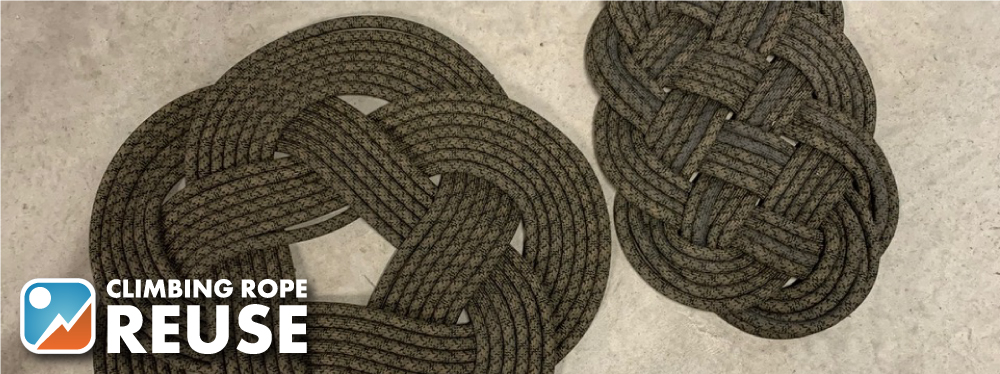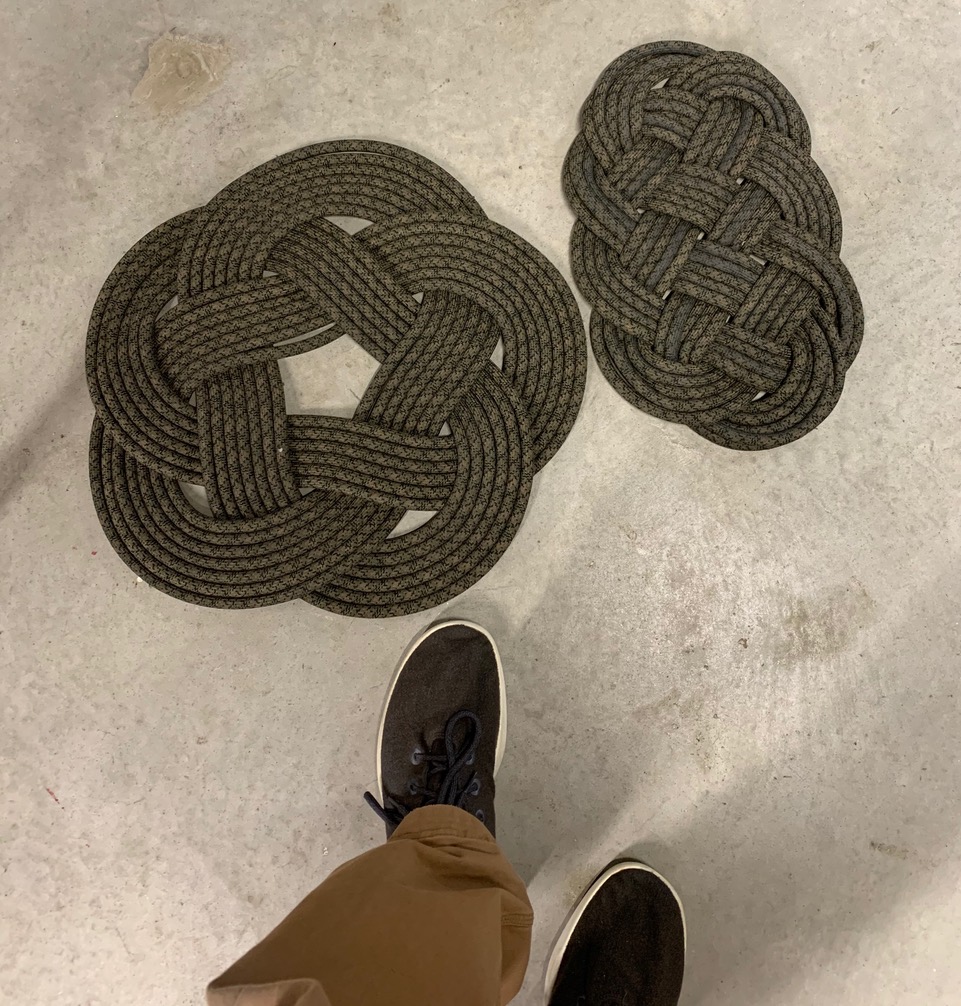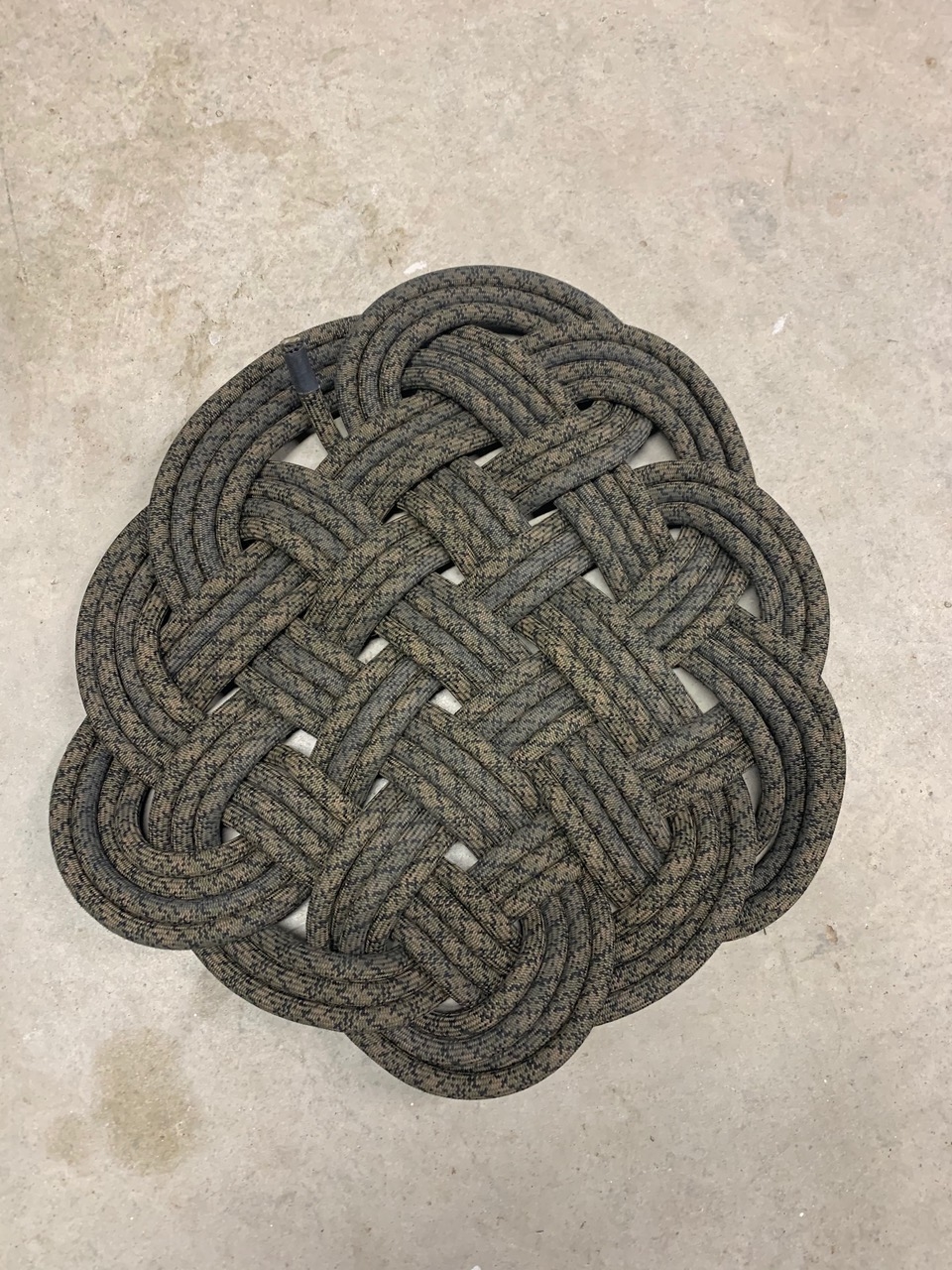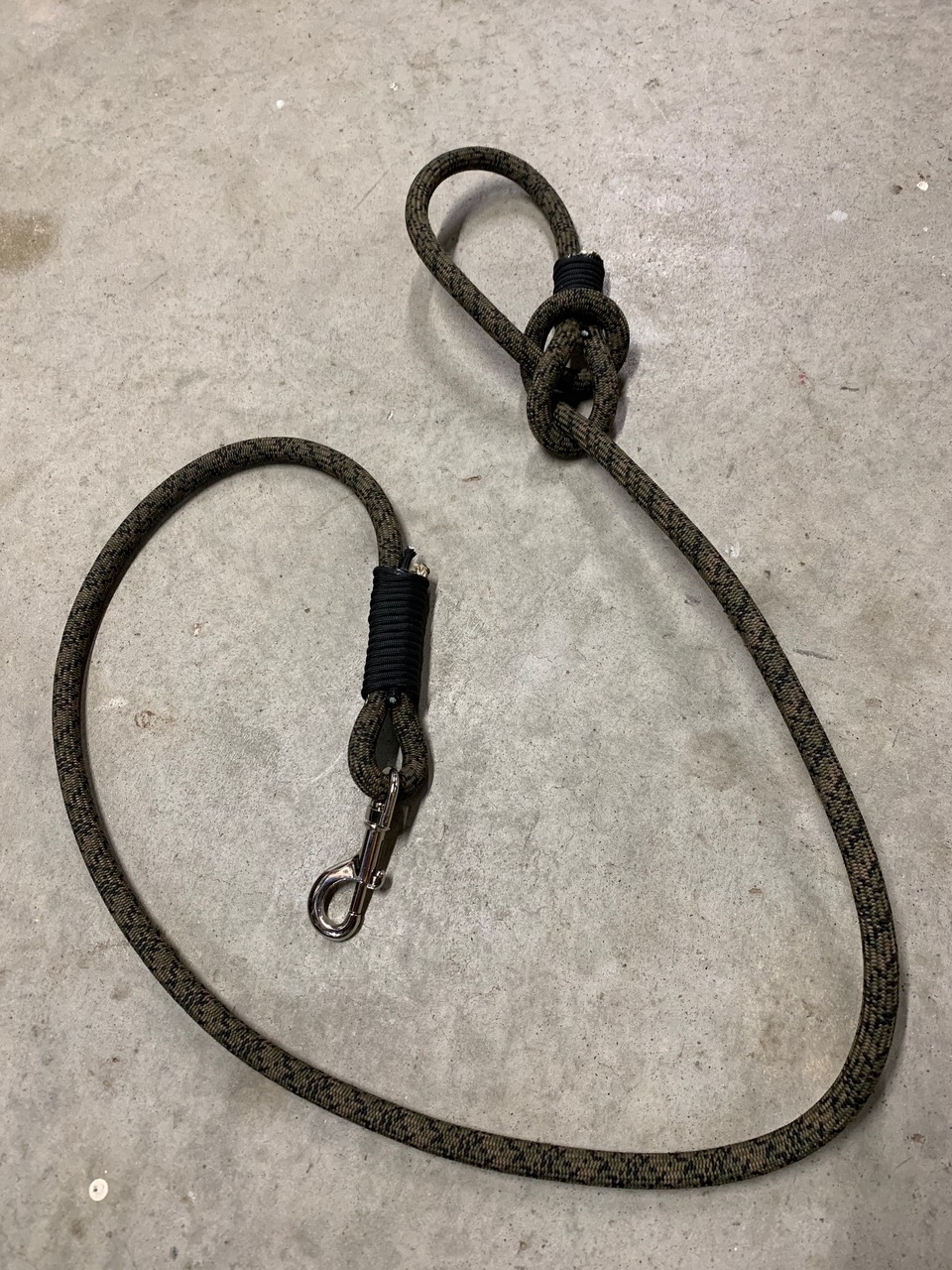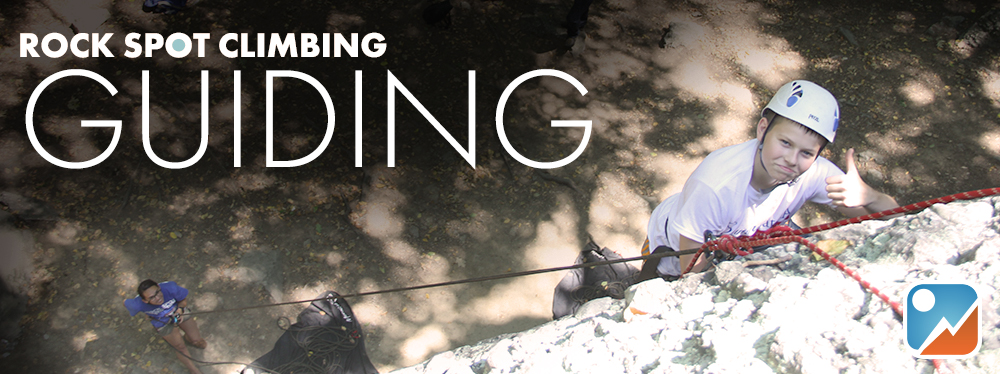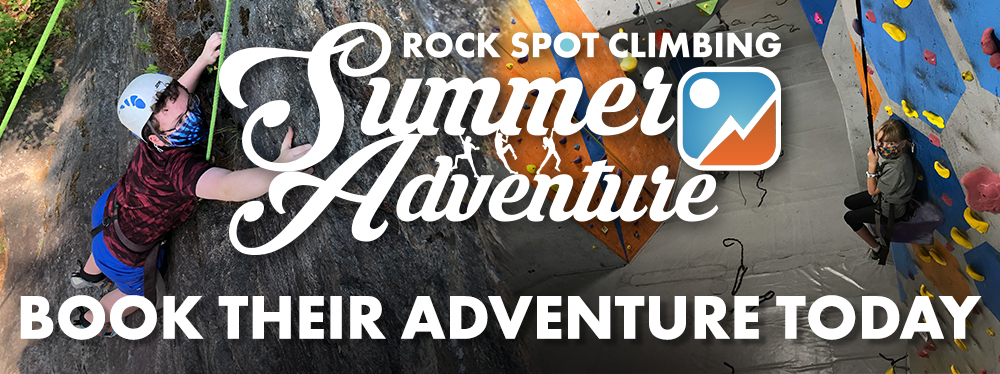Climbing Rope Reuse
Article & Images by Will Enestvedt
Climbing rope has a limited lifespan for climbing, but it can have a long and happy retirement if you re-use it creatively.
I took some rope that wasn’t fit for service in the gym anymore and cut it down to make some projects. Now that I am working from home, it’s nice to have a place to park my feet that reminds me of time spent doing something more fun, but I also like to get outside with our dog — so I wove a few mats, and made a leash.
These knots are all decades or centuries old, and can be found in the massive 1944 book called the “Ashley Book of Knots” by Clifford Ashley (which is often shortened to “ABOK”).
Much decorative knotwork comes to us from sailors. For example, Ashley says that mats like these could be fastened to the parts of a ship where ropes pass over the edge of wooden structures, in order to minimize wear. I’m not a high-seas sailor: I just like the way they look, and enjoy putting them together.
Ocean Plait & Turk’s Head Mat
This tightly-woven, oval-shaped mat is called the “ocean plait” (ABOK # 2243). (A plait is another word for a braid.) It’s on page 113 of of Geoffrey Budworth’s book “Complete Book of Decorative Knots” (ISBN 9781558217911). I used about 50 feet of rope — about 16 meters — and it took about an hour to tie. Most of the time is spent hauling the length of the rope through, over and over, and then “dressing” the knot at the end to look even and smooth.
The more rope used in the mat, the longer it takes to pull through — but the larger the final mat will be. Multiple turns along the same route will close up the holes and make the mat heavier and stiffer. Notice that all the openings are closed up in this one; it weighs a lot and is pretty rigid.
This is a flattened Turk’s Head knot; I first found it on page 69 of a document from the International Guild of Knot Tyers (IGKT)
(original drawing by Eric Franklin). It looks like a star, and would be really fun using a few different colors of rope.
I tied it by following the very simple instructions on page 112 of Geoffrey Budworth’s book “Complete Book of Decorative Knots” (ISBN 9781558217911). The diagrams are about the same, but Budworth’s are a little easier to read.
The finished piece is almost two feet across, and used about 50 feet (20 meters) of rope. There’s a gap in the middle that actually can’t be closed up because of the geometry. At sea, this mat could be tied around a ship’s mast to provide traction or decoration.
Circular Mat
Here’s a “circular mat” that’s similar to ones shown in ABOK. It’s not quite two feet across, and uses about 70 feet (22 meters) of rope.
It’s from page 13 of the IGKT booklet. It took me well over an hour to tie. The first turning of rope kept shifting and so it turned out a little lopsided. (One of my kids said it was acorn-shaped.) Next time I will using masking tape to secure it until I’ve gotten the second turning started. Making the really big projects benefits from using a board with pins/pegs in it to hold the rope in place.
Pet Leash
Last, I sewed up a leash for walking my dog.
To begin I used a Speedy Stitcher awl to sew ten lock-stitches through the rope at what became the handle end, and at the other end I did eight more after I threaded on the swivel clip. (I used the straight needle, with the “coarse” thread loaded in the awl.) Those stitches are strong, and should hold up to all but the biggest and wildest dogs; our little terrier rescue mutt only weighs twenty pounds, so it’s more than he needs.
I melted the cut ends of the rope with a lighter and then wrapped them in 550 cord (with a little CA glue) to look tidy. I tied a sort of bowline to keep the handle from opening wide at a bad time: the body of the knot makes a nice handful of rope to hang onto. If I had preferred a single size, I could have sewed the handle loop into place — but this way allows both my wife and I to change the size of the leash as we please.
What else?
I want to tie up a big monkey’s fist for playing fetch with my dog, and I have another idea for making a handle for throwing a tennis ball. I’m reluctant to make a chew toy, because most ropes are synthetic fibers that I don’t want him swallowing.
You can also make a frisbee by making a spiral of rope, with sewing stitches every so often. And of course a basket (with small line wrapping to add color and to hold the layers together) will hold your leash and the other rope creations when they’re not being used.

